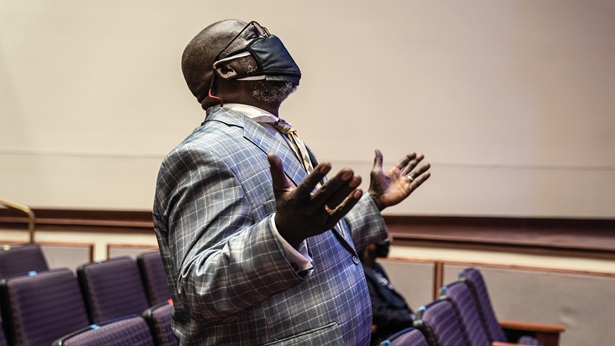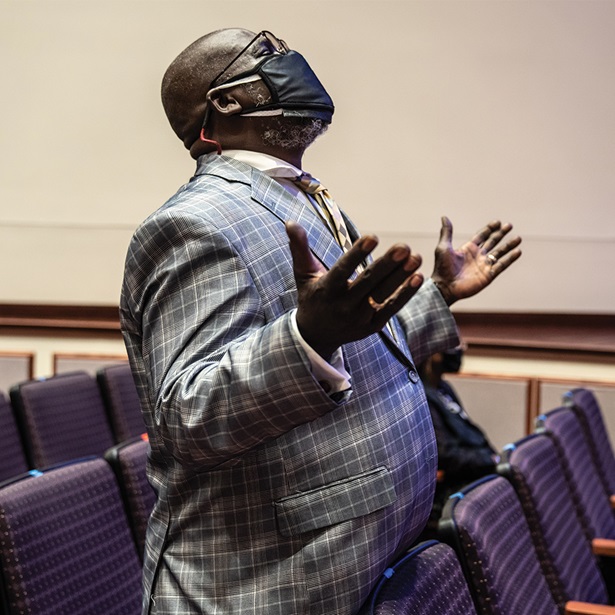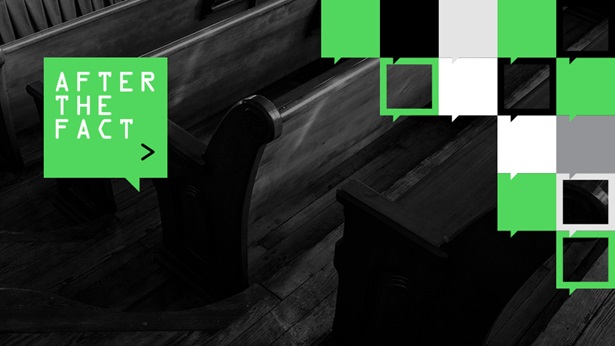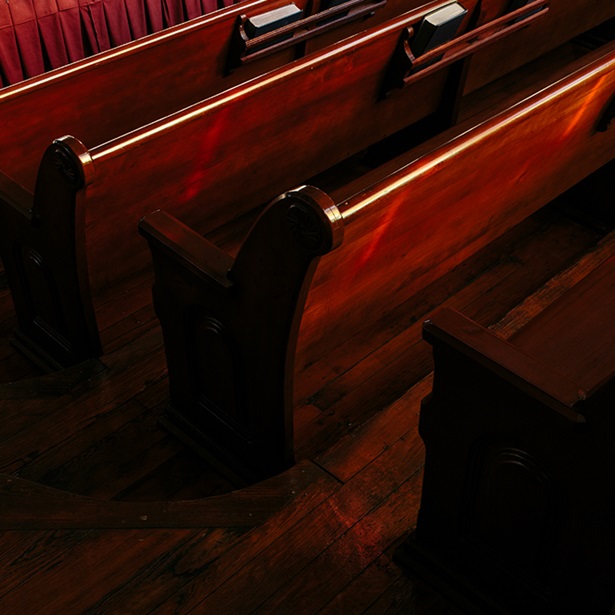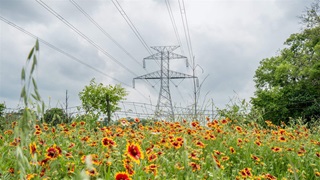What Is the Future of Religion in America?
If trends in religious switching continue, Christians could make up less than half of the U.S. population in just a few decades

Throughout the 13 Colonies in 1741, the young preacher Jonathan Edwards saw Americans standing on “slippery, declining ground, on the edge of a pit” as Christians pursued wealth, frolicked on the Sabbath, questioned predestination—and even thought good works might lead a soul to heaven.
Edwards famously warned that only God’s mercy prevented sinners from sizzling in hellfire like spiders over a candle flame. The terrifying imagery of his iconic sermon, “Sinners in the Hands of an Angry God,” helped launch the Great Awakening, a revival of Christian faith and practice that lasted much of the 18th century.
What would Edwards think now, if he were here to read the latest analysis of U.S. religious trends by the Pew Research Center? American Christians “keep leaving religion,” it notes matter-of-factly, adding that if recent patterns continue, “Christians could make up less than half of the U.S. population within a few decades.”
Nine out of 10 American adults identified as Christian as recently as the early 1990s, according to the Center’s September 2022 report, “Modeling the Future of Religion in America,” produced as part of the Pew-Templeton Global Religious Futures Project, a partnership with the John Templeton Foundation. Over the past three decades, however, “large numbers of Americans have left Christianity to join the growing ranks of U.S. adults who describe their religious identity as atheist, agnostic, or nothing in particular.”
Although polls have chronicled America’s declining religiosity for years, the Center’s future-oriented analysis hit home for many. “If you’re trying to predict the future religious landscape in America, according to Pew, the question is not whether Christianity will decline,” Christianity Today magazine commented, “it’s how fast and how far.”
To see what the future may look like, the Center’s researchers mined a deep trove of data to develop eight versions of how religion in America may evolve. The eight alternatives “are not meant as predictions of what will happen,” the report cautions, but rather as “formal demographic projections of what could happen under a few illustrative scenarios.”
In all the scenarios, Christianity’s share of the U.S. population declines. “Depending on whether religious switching continues at recent rates, speeds up, or stops entirely,” the report says, the Center’s projections show Christians shrinking from 64% of Americans of all ages in 2020 to between 54% and 35% by 2070.
Although the Center has made previous projections of religious growth and decline, they were always from a global perspective, illuminating the trajectories of world religions in settings ranging from Eastern Europe to sub-Saharan Africa.
“What we’ve done this time,” explains Alan Cooperman, who directs religion research at the Center, “is draw on the enormous amount of fine-grained data we have” on the dynamics of religious change in the U.S., which the Center has studied in ever-increasing detail.
For the first time, Cooperman says, the new projections take into account the percentage of U.S. parents who pass on their religious identity to their children by age 13, as well as the rates at which Americans give up or switch religions—especially between ages 15 and 29, when disaffiliation typically occurs. The research team produced multiple scenarios by modeling what would happen if those rates remained stable, accelerated, or reached certain limits.
Some of the scenarios are deliberately implausible yet still instructive. For example, what if no more Americans switched religious identities after 2020? In that case, a slight majority of the population (54%) would be Christian in 2070. That outcome provides context for three likelier scenarios:
- If movement into and out of Christianity continues at current rates—that is, in each new generation, 31% of young adult Christians become religiously disaffiliated while 21% of religiously unaffiliated people (“nones”) become Christian—then in 50 years, less than half of Americans (46%) would be Christian.
- If growing numbers of Christians switch out before age 30, while a shrinking share of “nones” switch in—but the switching rate is capped to keep the share of Christians who leave from rising above 50%, the limit found even in highly secular European nations—then 39% of Americans would be Christian in 2070. “This pattern seems to most closely fit the patterns observed in recent years,” according to the report.
- And if the share of Christians who switch out continues to rise—as it has in recent decades—without any limit, then Christians could represent just 35% of Americans in 2070.
Pew researchers went on to envision four more scenarios, calculating what would happen if every mother transmitted her religion (or absence of it) to her children; if all religious groups in the U.S. had children at identical rates; if all immigration and emigration ceased; and if there were no switching, in any direction, after age 30.
Think of these latter projections “as an experiment in which some key drivers of religious composition change are turned on or off, sped up or slowed down,” says the report, “to see how much difference they make.” All four additional scenarios produce only minimal differences in the broad pattern of Christianity’s declining share.
David Voas, a demographer and sociologist of religion and professor of social science at University College London, calls the Center’s report “an enormously persuasive picture of what’s likely to happen.”
“The first thing you note is the thoroughness of the analysis,” says Voas. “There’s the underlying data quality, but on top of that they’ve used the most complete scenario-building you can imagine, trying out all the main variations we find remotely plausible about these things, from differential fertility to religious switching to migration.”
“The end product is so compelling precisely because you see all the main possibilities we could imagine for the near future,” says Voas, “and that allows us to point to ones we think most likely.”
Conrad Hackett, the Center’s associate director of research and senior demographer, had long suspected that the Center’s previous projections for the growth of the “nones” in the U.S. were conservative, because they were made for a 2015 global report on “The Future of World Religions: Population Growth Projections, 2010-2050” that could not dig deeply into the unique traits of each country.
“It’s not feasible to do eight scenarios for every country when you’re studying nearly two hundred countries,” says Hackett. “But for the U.S., we had the data, and we knew it would be interesting.”
As Hackett anticipated, the new analyses yielded markedly different trajectories. Whereas the 2015 report had projected that two-thirds of Americans would be Christian in 2050, the 2022 analysis projected that just 47% of the population would be Christian at midcentury under the likeliest scenario, and 39% by 2070.
Nearly three centuries after Edwards’ fiery sermon, Christianity’s tumbling numbers might have him rolling in his Princeton, New Jersey, grave. Still, the report’s authors caution that even the most scrupulous data analysis is not a crystal ball.
Although no Great Awakening seems imminent, “new patterns of religious change could emerge at any time,” the researchers write. “Armed conflicts, social movements, rising authoritarianism, natural disasters, or worsening economic conditions are just a few of the circumstances that sometimes trigger sudden social—and religious—upheavals.”
David O’Reilly spent more than two decades covering religion for The Philadelphia Inquirer.
